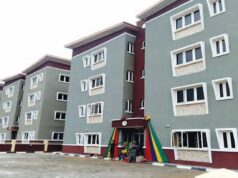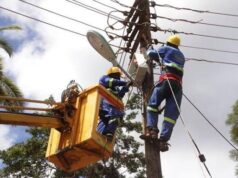
Eighteen power facilities throughout Nigeria experienced diminished output in the early half of 2025, according to a report released by the Nigerian Electricity Regulatory Commission (NERC). This report encompasses the timeframe from January to June.
The commission’s secondary report for 2025 indicated that the average hourly generation on the national grid plummeted by 5.65%, declining from 4,770.59MWh/h in the first quarter (Q1) to 4,501.06MWh/h in the second quarter (Q2). Furthermore, total generation saw a decrease of 4.60%, reducing from 10,304.47GWh to 9,830.31GWh.
The report pinpointed the downturn in energy generation to diminished load offtake by customers connected to the grid, particularly electricity distribution companies (DisCos).
Among the eighteen plants that experienced performance declines, Odukpani_1 suffered the most substantial reduction, losing 100.40MWh/h, followed closely by Geregu_2 (-81.47MWh/h), Delta_1 (-68.47MWh/h), Shiroro_1 (-46.07MWh/h), Afam_2 (-34.77MWh/h), and Rivers_1 (-31.40MWh/h).
On the contrary, four power plants—Geregu_1 (+97.29MWh/h), Egbin_1 (+87.30MWh/h), Ihovbor_1 (+15.11MWh/h), and Olorunsogo_2 (+12.58MWh/h)—saw increases in their average hourly generation compared to the previous quarter.
“In total, eighteen (18) plants observed decreases in their average hourly generation spanning the quarters. Marked reductions in average hourly generation were notably reported in Odukpani_1 (-100.40MWh/h), Geregu_2 (-81.47MWh/h), Delta_1 (-68.47MWh/h), Shiroro_1 (-46.07MWh/h), Afam_2 (-34.77MWh/h), and Rivers_1 (-31.40MWh/h) power plants.
“Conversely, increases in average hourly generation were noted in Geregu_1 (+97.29MWh/h), Egbin_1 (+87.30MWh/h), Ihovbor_1 (+15.11MWh/h), and Olorunsogo_2 (+12.58MWh/h) plants across the quarters, as indicated by the report.
The report also unveiled that total average hourly generation from grid-connected thermal plants dipped by 201.38MWh/h (-6.02%) in Q2, with 15 out of 23 thermal plants recording declines.
System performance metrics further illustrated deviations in frequency and voltage levels from the standard operating ranges during this period.
Throughout the review period, the average lower daily frequency was recorded at 49.33Hz, while the upper frequency reached 50.78Hz, both straying from the standard operating parameters of 49.75Hz–50.25Hz, although still within acceptable stress limits.
Similarly, the average lower system voltage of 300.05kV fell beneath the established limit of 313.50kV, while the upper voltage of 345.31kV remained within permissible thresholds.
NERC attributed the overall decline in generation to reduced demand and energy offtake from grid-connected customers, a scenario that continues to undermine stability and reliability on the national grid.











